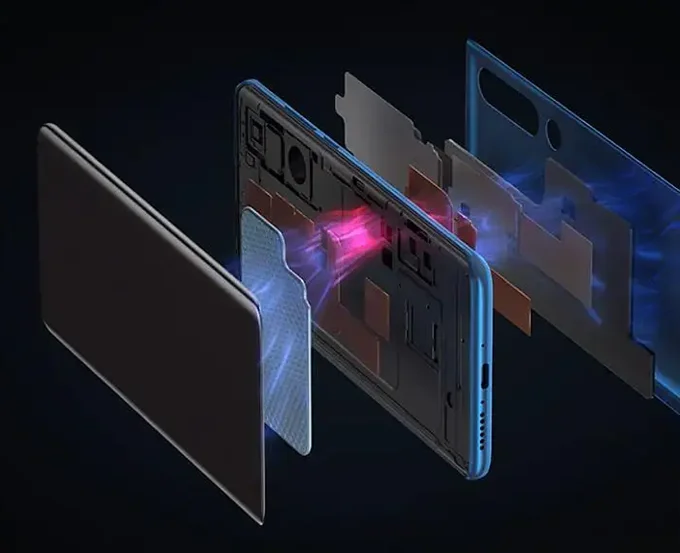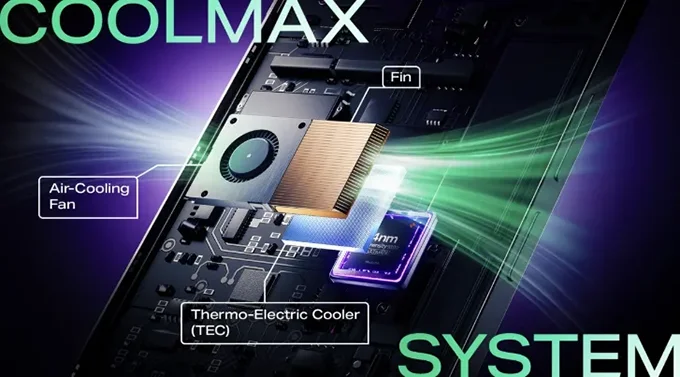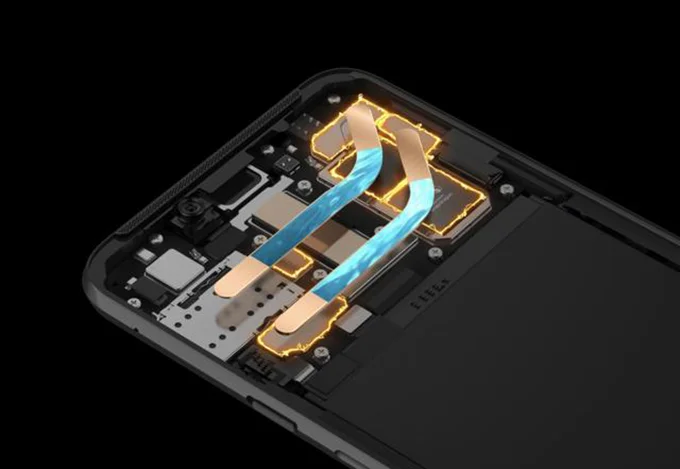Ever thought about the reason your phone gets hot while gaming, taking videos, or 5G browsing? That heat is not only annoying but also indicates that your device is struggling to maintain its performance. Smartphone thermal management is one of the vital challenges that need to be tackled in the design of modern mobile technology.
In this article, we’ll explore how the cooling systems of smartphones operate, the substances and methods used to produce them, and the futuristic heat management in mobile devices that is being created through innovations.

Why Smartphone Cooling Matters More Than Ever
1. Enhanced Tactile Experience
Efficient heat dissipation ensures that smartphones remain cool to the touch, providing users with a comfortable and enjoyable tactile experience during prolonged usage.
2. Improved Performance Experience
Optimal thermal management prevents overheating, enabling smartphones to maintain peak performance levels even during demanding tasks such as gaming, multitasking, and multimedia consumption.
3. Ensuring Safety
Effective heat dissipation is essential for preventing overheating-related safety hazards such as battery swelling, thermal runaway, and potential fire risks, ensuring user safety and device reliability.
4. Prolonged Device Lifespan
By mitigating heat buildup, smartphones can maintain their internal components at optimal operating temperatures, reducing the risk of premature component degradation and extending the overall lifespan of the device.
5. Preserving Battery Longevity
Excessive heat can accelerate battery degradation, leading to reduced battery capacity and shortened lifespan. Efficient heat dissipation helps maintain battery health, preserving its longevity and ensuring consistent performance over time.

Challenges of Mobile Phone Cooling
1. Increased Performance Demands:
The quest for higher performance in smartphones leads to increased heat generation, posing challenges in dissipating excess heat effectively without compromising device integrity.
2. Compact Design Constraints:
The trend towards sleek and compact smartphone designs limits the available space for heat dissipation components, necessitating innovative solutions to maximize thermal efficiency within constrained form factors.
3. Proliferation of 5G Technology:
The widespread adoption of 5G technology introduces additional heat dissipation challenges due to higher data transfer speeds and increased network complexity, requiring efficient thermal management solutions to maintain device performance and reliability.
4. Rise of Gaming and Multimedia Applications:
The popularity of gaming and multimedia applications on smartphones amplifies heat generation during prolonged usage, necessitating robust thermal solutions to prevent thermal throttling and ensure sustained performance under demanding conditions.
5. Importance of User Experience:
With user experience being a critical aspect of smartphone usage, effective heat dissipation is essential for preventing overheating-related performance issues, enhancing device longevity, and ensuring user satisfaction.

Types of Cooling Methods for Mobile Devices
1. Passive Cooling
Most smartphones rely on passive cooling systems to manage internal heat. Components such as heat spreaders, graphite sheets, and vapor chambers transfer heat from critical parts like the processor to the chassis, keeping the device cool. This approach is silent, efficient, and space-saving — making it ideal for compact mobile designs.
Traditionally, graphite sheets served as the primary thermal solution thanks to their excellent thermal conductivity and flexibility, which allowed manufacturers to mold them into various shapes for different devices. During the 4G era, graphite dominated smartphone thermal management.
However, with the evolution of 5G technology and the growing demand for high-performance smartphones, thermal systems required significant upgrades. In addition to graphite, Vapor Chambers (VCs) and liquid cooling pipes were introduced to handle the increased heat load.
A Vapor Chamber, essentially a flattened heat pipe, provides bidirectional heat dissipation. It contains a small amount of coolant that evaporates, condenses, and circulates to transfer heat efficiently away from hotspots. By combining thin vapor chambers with graphite layers, modern smartphones create a larger, more effective thermal pathway that evenly distributes heat and stabilizes processor temperatures.
This hybrid structure—multi-layered graphite sheets paired with vapor chambers or liquid-cooled copper pipes—has become the standard thermal management design in many high-end 5G smartphones. It ensures stable performance, longer device lifespan, and a smoother user experience even during heavy gaming or long video recording sessions.
2. Active Cooling
Active cooling enhances convective heat transfer, rapidly dissipating heat generated by internal components like phone chips. The effectiveness of active cooling surpasses passive methods. So, why hasn’t it become widespread?
Here are the reasons:
- Increased Thickness and Weight: Devices with active cooling modules are significantly thicker and heavier than standard smartphones. While acceptable for dedicated gamers, the added bulk is less appealing to average users.
- Reduced System Reliability: Active cooling necessitates integrating fans into phones, introducing moving parts prone to damage. Unlike computers, phones endure frequent drops, making them unsuitable for active cooling. Additionally, fan lifespan limitations pose risks.
- Noise Generation: Active cooling, akin to computers, produces noticeable noise during fan operation. Despite optimizations, residual noise persists, detracting from user experience. Mass adoption could exacerbate this issue.
- Consumer Preferences for Performance: Consumer demand largely dictates smartphone design. The highest performing devices don’t always lead sales charts. Gaming enthusiasts, a niche market, prioritize extreme performance. Mainstream manufacturers prioritize features with broader appeal, often neglecting active cooling.
Consequently, most smartphones resort to external cooling accessories, offering limited assistance with inconvenience in usage.

How Vapor Chambers Shape the Future of Mobile Cooling
Vapor chambers have become the top technique for thermal management in mobile devices. They consist of a sealed metal enclosure that contains a small amount of liquid, which evaporates and condenses in a continuous cycle, so the heat gets rapidly transferred away from the hotspots, for example, the CPU and GPU.
Vapor chambers differ from graphite sheets or copper pipes, as they are very effective in cooling by spreading heat uniformly, which means no particular spot will be too hot or too cold. This feature has become very important for 5G and foldable designs.
Manufacturers and technology partners such as TMNetch Vapor Chamber are now pushing the limits of this technology. They use precision metal etching and ultra-thin structures to create lightweight but highly efficient cooling plates that can be used in compact devices. These new generation vapor chambers are already pushing flagship smartphones to perform better and last longer even through intensive use.
FAQs About Smartphone Thermal Management
How does thermal management technology affect user comfort during extended use?
Effective thermal management ensures surface temperatures remain safe and comfortable, even during long gaming or streaming sessions. By preventing hotspots, users experience fewer slowdowns and more consistent performance.
How do smartphone processors stay cool?
Processors are cooled through a combination of materials and smart scheduling. Vapor chambers, graphite sheets, and heat spreaders move heat away from chips, while software dynamically lowers frequency or shifts workloads to avoid overheating.
Which smartphones have the best thermal management during prolonged use?
Devices that include large vapor chambers, multi-layer graphite cooling, and intelligent thermal control systems tend to perform better under stress. Many flagship 5G phones now use this combination for maximum stability.
Do newer models have better thermal management to preserve battery life?
Yes. Newer generations often feature more advanced materials and refined heat pathways that keep batteries cooler, extending their lifespan while maintaining consistent performance.
Conclusion
Smartphone thermal management presents both technical and design challenges, yet it also serves as an opportunity for innovation and enhancement for manufacturers. With ongoing technological advancements and evolving user demands, we can anticipate further optimization and innovation in smartphone cooling technology.
Whether through active or passive cooling methods, the goal remains to ensure optimal performance, safety, and user experience. Looking ahead, we can anticipate the emergence of more efficient and intelligent smartphone cooling solutions, promising users an enhanced experience and reliability.
